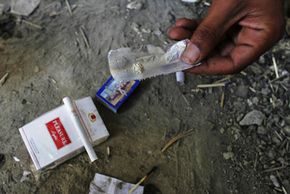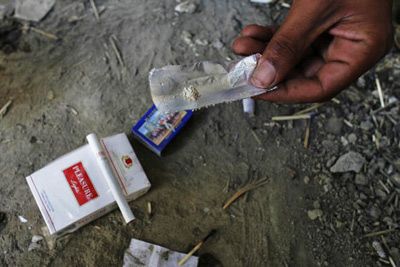Different categories of substances affect the body differently. And while it’s impossible to answer questions like, “Which drug is the worst?” we do have data on the prevalence and severity of substance use disorders for the most commonly misused substances, from alcohol to heroin.
1. Alcohol Use Disorder
Alcohol is readily available, socially acceptable — and incredibly dangerous. In 2021, 29.5 million people (10.6 percent of the population) in the United States met the criteria for an alcohol use disorder, making alcohol use disorder the most prevalent SUD in the U.S.
Most of these people (59.6 percent) had a mild disorder, while 19.5 percent had a severe disorder.
Despite alcohol’s widespread use (in 2021, 133.1 million people in the U.S. reported using alcohol in the preceding month), physicians consider alcohol withdrawal more dangerous than withdrawal from illicit drugs like heroin, due to the life-threatening physical symptoms of alcohol withdrawal.
2. Marijuana Use Disorder
Marijuana refers to the flower buds and leaves of the cannabis plant, which contains high levels of the psychoactive compound tetrahydrocannabinol (THC). Although there is promising research surrounding medical marijuana, the plant was associated with the second-highest rate of substance use disorder in the U.S. in 2021 (after alcohol).
Similarly to alcohol use disorder, most people with marijuana use disorder (57.6 percent) had a mild disorder, with only 16.1 percent meeting the criteria for a severe disorder.
3. Prescription Pain Reliever Use Disorder
In 2021, 8.7 million people in the U.S. misused prescription pain relievers, meaning they took pain relievers without a prescription, or they used their prescription medication in a way other than it was intended (for example, taking more than the prescribed dosage).
The largest share of people who misused pain relievers in 2021 (44.9 percent) got them through a friend or family member, while 39.3 percent of people who misused pain relievers got the medication through a prescription from their doctor.
Prescription opioids like OxyContin not only block pain receptors in the brain, they also release large quantities of dopamine, producing a sense of euphoria. Even when patients use prescription opioids as directed, they can develop a tolerance and experience withdrawal symptoms when stopping the drug.
The withdrawal symptoms may help explain why so many people struggle to stop using prescription opioids. In 2021, 5 million people in the U.S. (1.8 percent of the population) met the criteria for a prescription pain reliever use disorder. For 65 percent of those with a prescription pain reliever use disorder, the disorder was mild, and for 16 percent, it was severe.
4. Methamphetamine Use Disorder
Methamphetamine is available by prescription in the United States, but most people who use “meth” obtain it illegally. Methamphetamine is a short-acting, central nervous system stimulant that releases large quantities of dopamine into the brain.
Prolonged use of methamphetamine can cause hallucinations, paranoia, violence and potentially permanent changes to the areas of the brain associated with memory and emotion.
Unlike alcohol and marijuana use disorders, methamphetamine use disorder is more likely to be severe. In 2021, among the 1.6 million people in the United States who had a methamphetamine use disorder, 58.4 percent had a severe disorder, and just 17.4 had a mild disorder.
5. Cocaine Use Disorder
Cocaine is a stimulant drug derived from the coca plant (Erythroxylum coca). Coca is native to South America, and the indigenous people of Peru and Bolivia have used the plant for centuries, chewing on its leaves to stay alert and ward off hunger and thirst.
In 2021, 4.8 million people in the U.S. used cocaine, 1.6 million of whom met the criteria for a cocaine use disorder. In the U.S., dealers typically sell cocaine as a fine white powder, which is easy to mix with other substances, from cornstarch to the synthetic opioid fentanyl.
The prevalence of mild cocaine use disorder (42.2 percent) is about the same as severe cocaine use disorder (40 percent).
6. Heroin Use Disorder
Heroin is part of a class of drugs known as opioids, which includes prescription pain relievers like hydrocodone, oxycodone and morphine. Of the 9.2 million people who misused opioids in 2021, the vast majority (88.1 percent) misused prescription medication alone, while some (11.9 percent) used both heroin and prescription opioids, and a small percentage (5.7 percent) used heroin alone.
In 2021, 1 million people in the U.S. had a heroin use disorder. Like other opioids, heroin can be incredibly difficult to stop using due to intense withdrawal symptoms. Continued heroin use can lead to loss of the brain’s white matter, which is involved in behavior control and decision-making.




